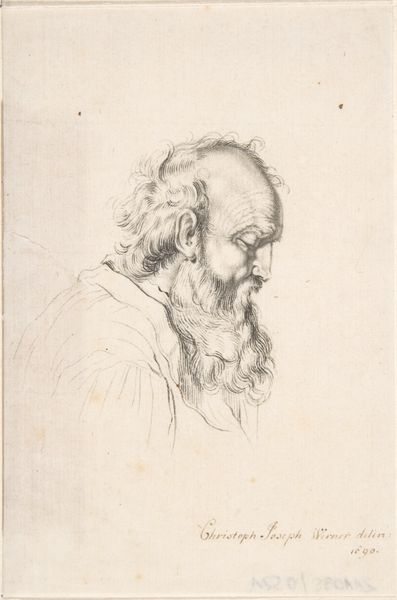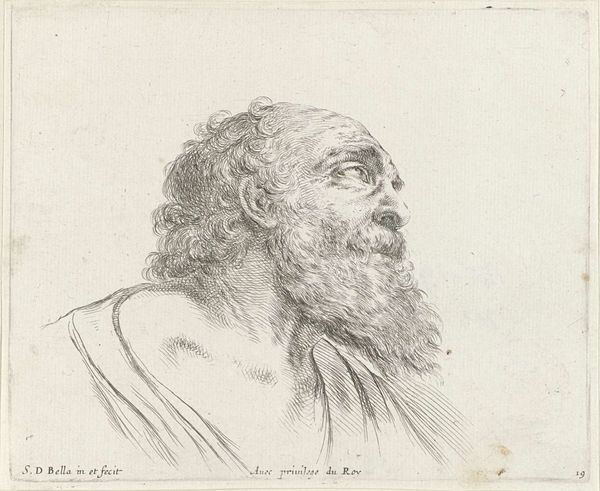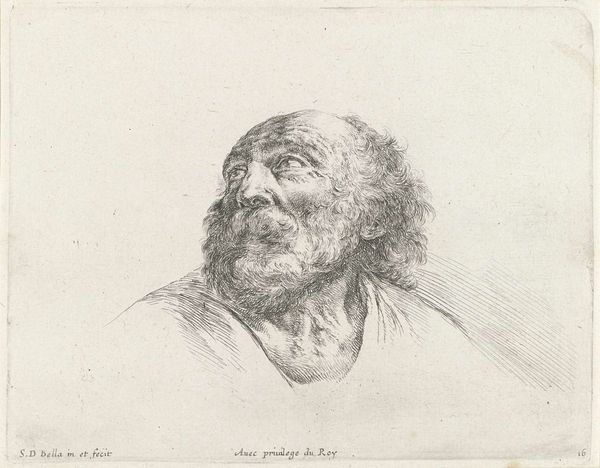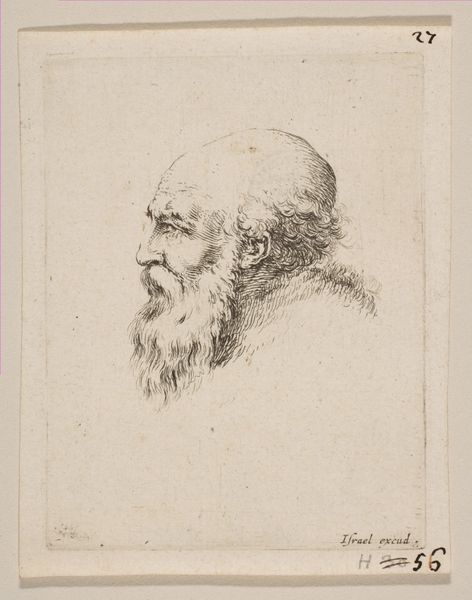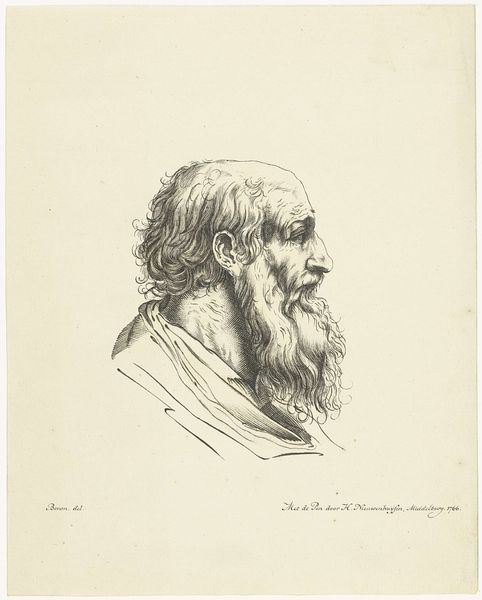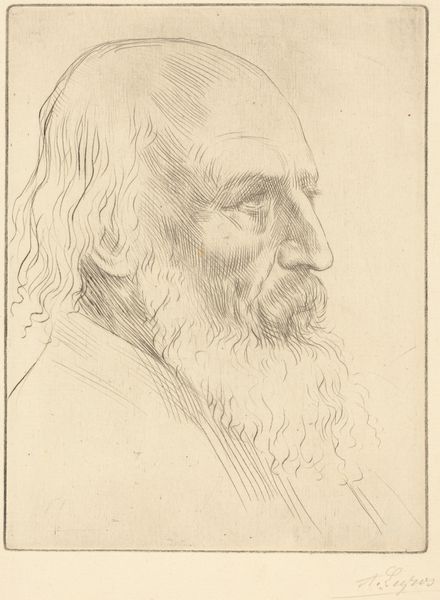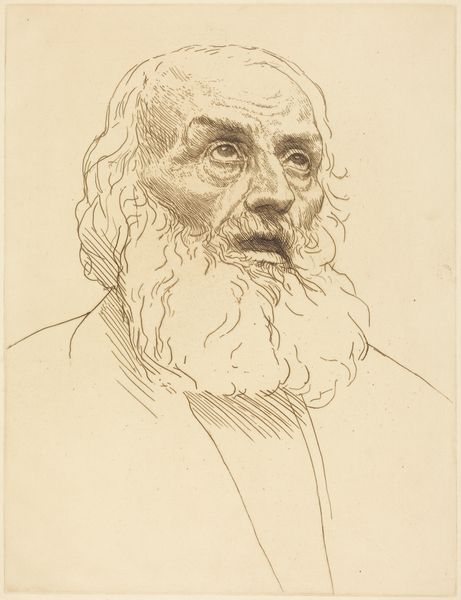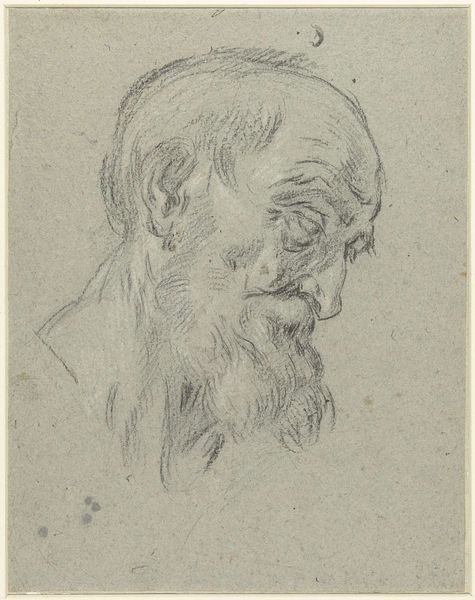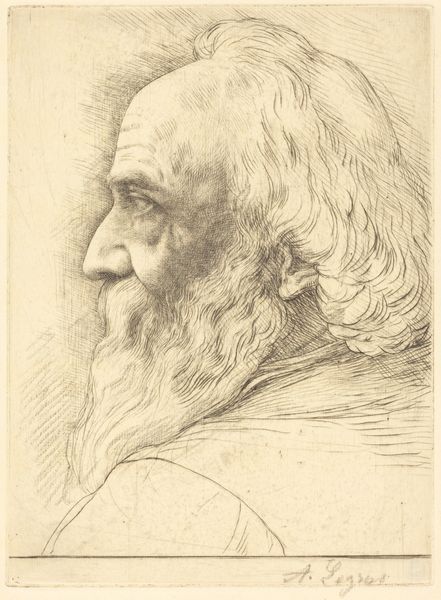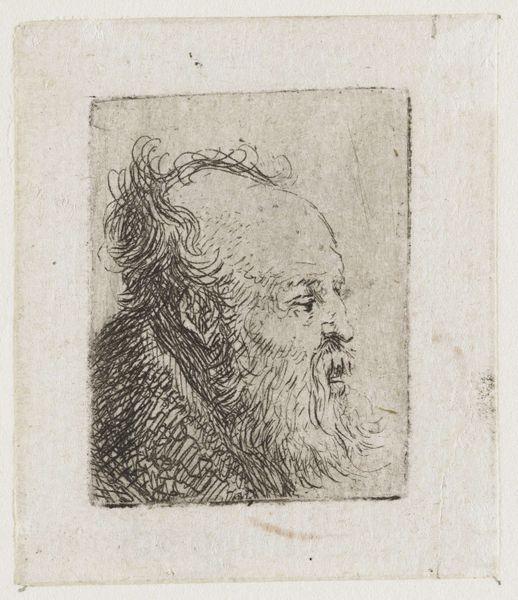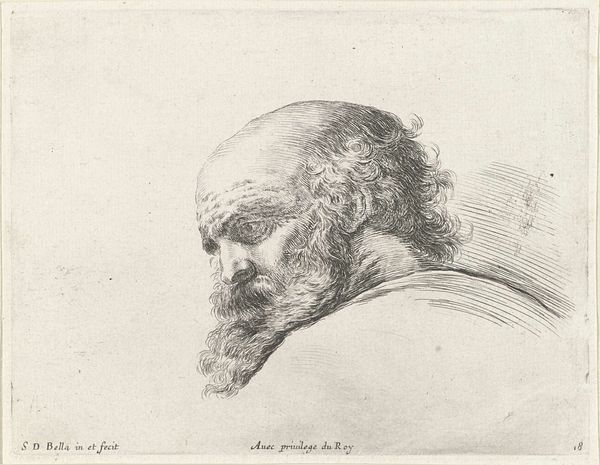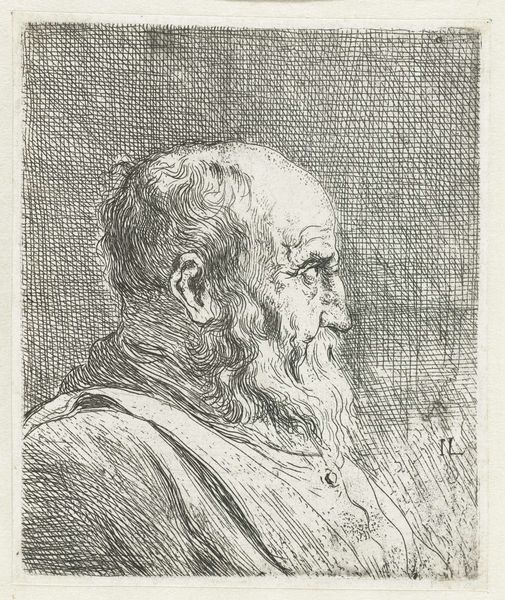
drawing, paper, ink
#
portrait
#
drawing
#
baroque
#
pencil sketch
#
paper
#
ink
#
pen-ink sketch
#
history-painting
Dimensions: height 81 mm, width 63 mm
Copyright: Rijks Museum: Open Domain
Curator: Here we have "Hoofd van H. Petrus," or "Head of St. Peter," an ink drawing on paper attributed to Stefano della Bella, likely created sometime between 1620 and 1647. Editor: My first impression is of intense supplication, or perhaps even a touch of fearful awe. The upward gaze really directs the eye to something beyond the frame. Curator: Absolutely. Consider the context. Paper during that era was a valuable commodity, often produced in specific regional mills with their own unique processes. Della Bella's choice reflects access and a deliberate engagement with artistic labor. Editor: That's interesting. The way he renders St. Peter with that gaze also tells a story about power, doesn’t it? The iconography of the upward gaze can represent divine inspiration, or acknowledgement of something powerful that’s above and beyond the immediate moment. Curator: And observe the materiality itself. The texture of the paper against the swift, assured strokes of the ink. Della Bella wasn't just depicting a saint; he was performing an act of skilled craftsmanship, reflecting societal values regarding artistry. The paper support acts as the material foundation for the final image. Editor: It really encapsulates a complex set of power dynamics within the church itself. We see the veneration, the aspiration toward grace. This specific composition invites viewers to ponder the figure's psychological state – and the history. It places St. Peter as eternally reaching toward something unreachable. Curator: And thinking about it materially, the permanence of the ink on paper solidifies the visual weight of those historical narratives, in service of reinforcing societal norms and spiritual ideals. Editor: True. It becomes a symbolic record, made physical through these considered techniques. Curator: Exactly. A fusion of labor and devotion, permanently etched onto paper. Editor: And in its presentation, we see a testament to art's function as a mirror reflecting shared anxieties and aspirations. Curator: It is precisely the convergence of method, materials, and cultural narrative that makes this work compelling. Editor: For me, it's more how the symbol invites empathy, sparking recognition of shared experiences and cultural understanding.
Comments
No comments
Be the first to comment and join the conversation on the ultimate creative platform.
